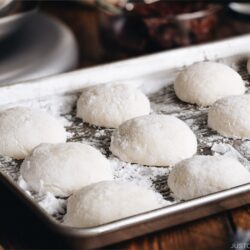
How to Make Mochi with a Stand Mixer
Make fresh Homemade Mochi (Japanese rice cakes) using a stand mixer and an electric rice cooker! Stuff the mochi with your favorite dessert filling, dip it in a savory or sweet coating, or enjoy it in red bean soup or Japanese New Year soup (ozoni).
Ingredients
- 2¼ cups sweet rice/glutinous rice (mochigome) (or 3 rice cooker cups)
- 1⅔ cups water (in your rice cooker, the water level should reach the line on the inner pan for 3 rice cooker cups of Sweet Rice)
- potato starch or cornstarch (for dusting)
For the Anko Mochi (optional)
- sweet red bean paste (anko) (store bought, or you can make my Homemade Anko or Pressure Cooker Anko)
For the Kinako Mochi (optional)
- 2 Tbsp kinako (roasted soybean flour) (enough for 2 mochi balls; follow a ratio of 2 parts kinako to 1 part sugar)
- 1 Tbsp sugar
Instructions
Before You Start...
- I created this recipe using the KitchenAid Professional series stand mixer. I cannot guarantee that other equipment will work, as I have not tested it. Please do not use a hand mixer to make this recipe, as the motor is not powerful enough to handle mochi. You can always pound the cooked glutinous rice with a wooden mallet.
To Measure and Rinse the Glutinous Rice
- Measure 2¼ cups sweet rice/glutinous rice (mochigome). Tip: One rice cooker cup (180 ml) of uncooked glutinous rice is 150 g or ¾ US cup. You will need 3 rice cooker cups (540 ml, 450 g) for this recipe.
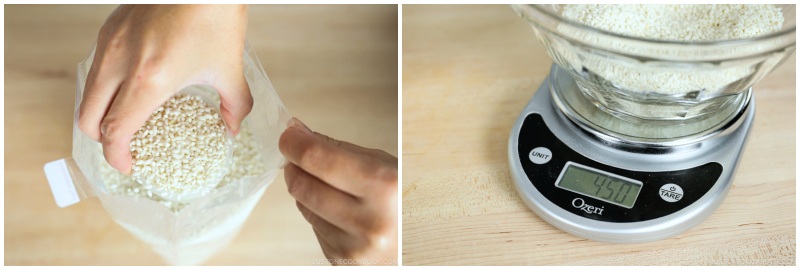
- To rinse the glutinous rice, put the rice in a large bowl and add some water. Stir with your hands and quickly drain the water.
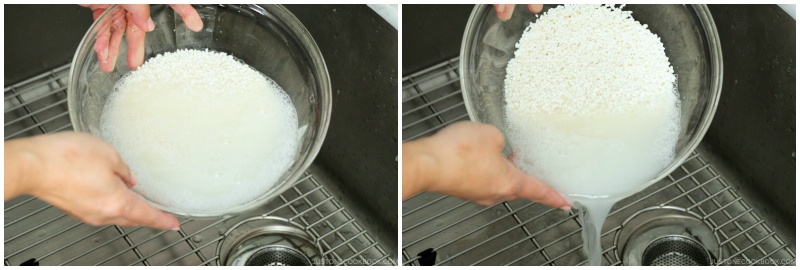
- Then, gently stir the rice with your fingertips. Glutinous rice breaks easily, so do not apply any extra pressure. Just lightly stir it a few times.
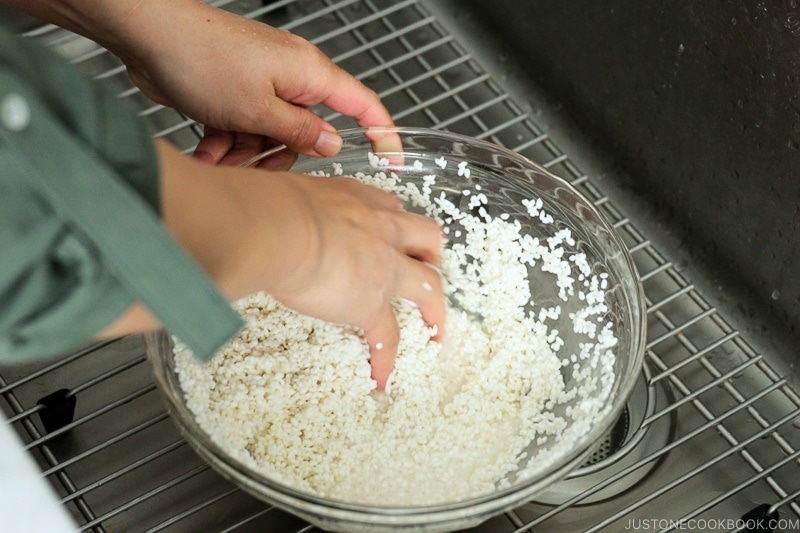
- Add more water to the bowl and carefully rinse. Repeat rinsing 3–4 more times. Drain the rice in a fine-mesh sieve.
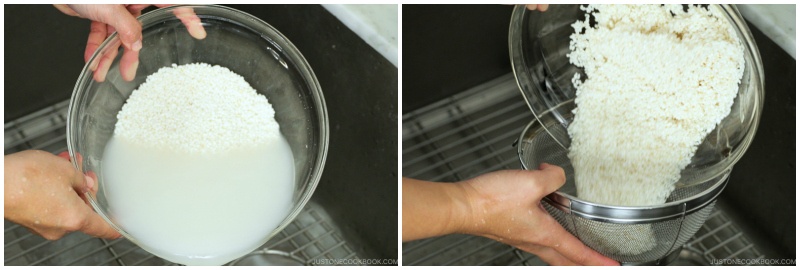
- Shake the sieve to remove the excess water. Then, transfer the rice to the inner pot of a rice cooker.
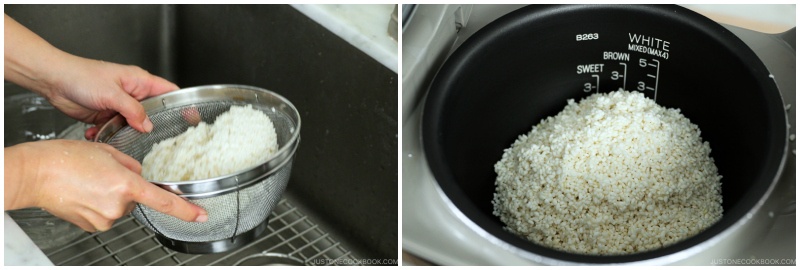
- Even the level of the rice in the pot and add 1⅔ cups water. The water level should be at the inner pot‘s 3-cup line for Sweet Rice. Evenly distribute the rice with chopsticks or your fingers.
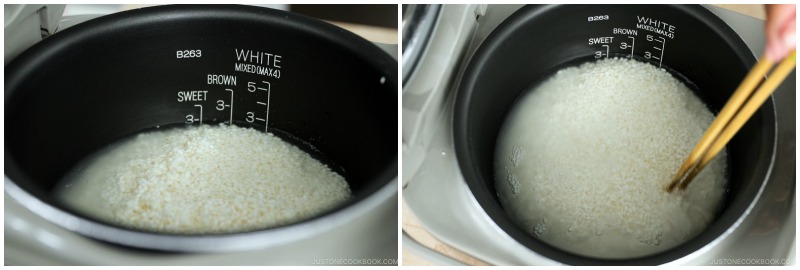
To Cook the Glutinous Rice
- Close the lid of the rice cooker. Select Regular on the menu and start cooking. Regular mode cooking is usually 5–10 minutes longer than the Sweet Rice setting. When the rice is finished cooking, we can take it out immediately.
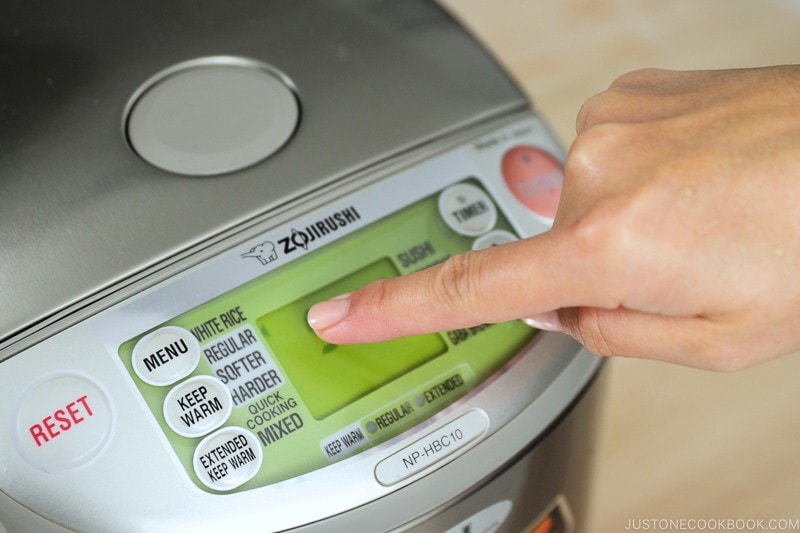
- When the rice is almost done, prepare about 4–5 cups of boiling water. Once the hot water is ready, pour one-third of the boiled water into your stand mixer bowl to warm it up, one-third into a mixing bowl to warm a dough hook and flat beater, and the rest into a 2-cup measuring cup to keep a silicone spatula wet. Make sure there is enough hot water to submerge all the tools.

- Once the mixer bowl is warm, discard the hot water. Then, transfer all the cooked glutinous rice into the stand mixer bowl.
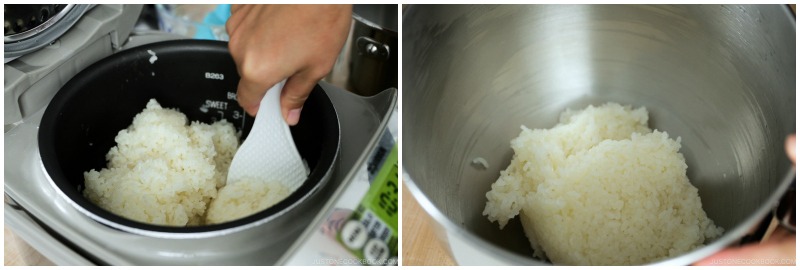
To Knead with the Dough Hook Attachment
- Set the dough hook attachment on the stand mixer. Start kneading the glutinous rice on Speed 2. Set a timer for 3 minutes (first round).
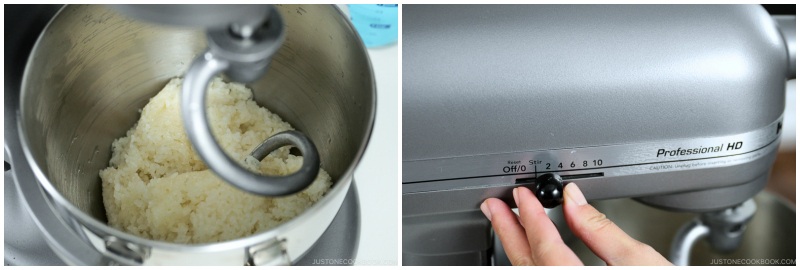
- The dough hook will start pulling in the rice.
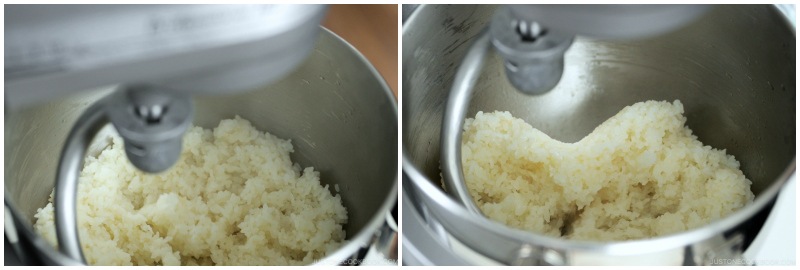
- Tip: While kneading, you can use your wet silicone spatula to detach the glutinous rice from the wall of the stand mixer bowl.
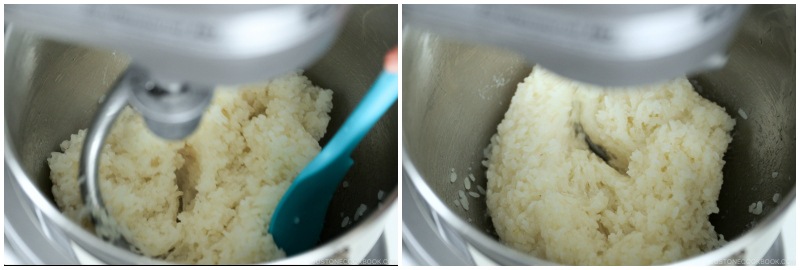
- When the 3-minute timer beeps [03:00], remove the bowl from the stand mixer, keeping the dough hook attached. Using the wet silicone spatula, flip over the glutinous rice. Dip the spatula in the water a few times so it doesn’t stick to the rice.
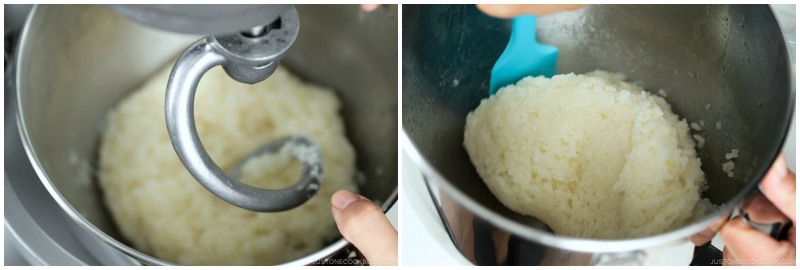
- Set the bowl back onto the stand mixer and start kneading again on Speed 2. Reset the timer for 3 minutes (second round).
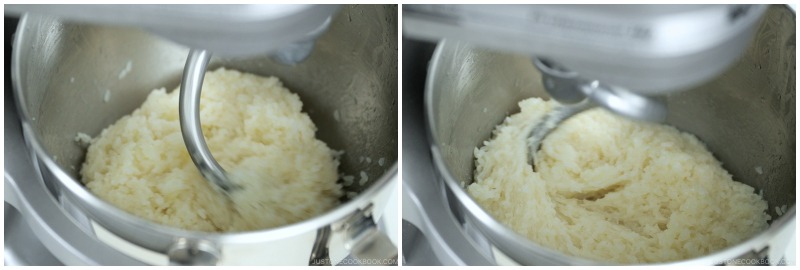
- When the 3-minute timer beeps [06:00], remove the bowl from the stand mixer and flip the glutinous rice again, using the wet silicone spatula. Now, the rice grains are less visible and are starting to look like mochi.
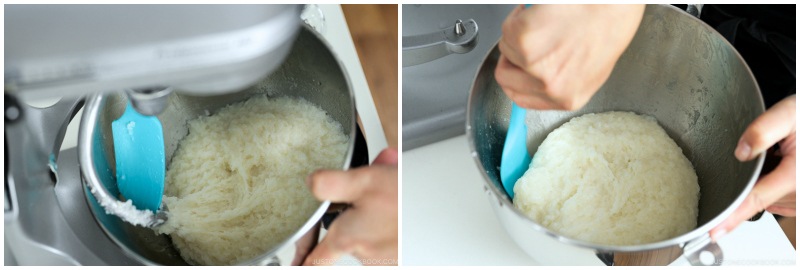
- Put the bowl back onto the stand mixer and start kneading again on Speed 2. Reset the timer for 3 minutes (third round).
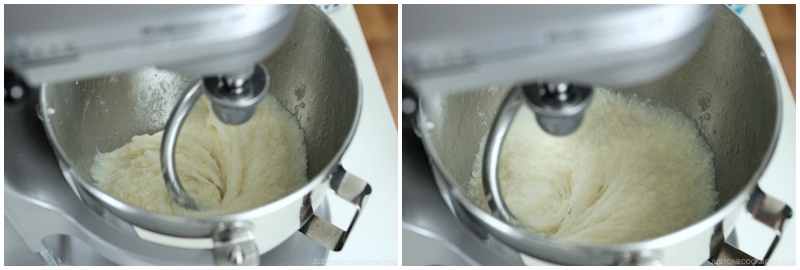
- When the 3-minute timer beeps [09:00], remove the bowl from the stand mixer and flip the glutinous rice again, using the wet silicone spatula. Now it’s getting stickier and elastic.
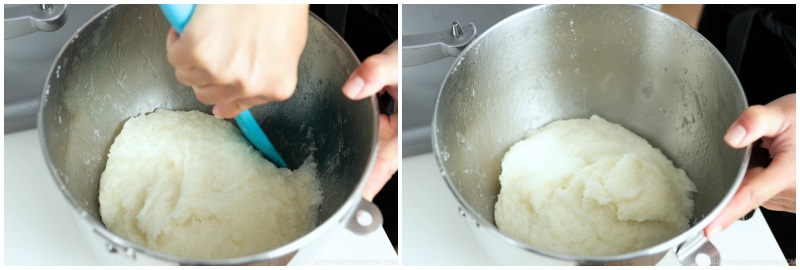
- Put the bowl back onto the stand mixer and start kneading again on Speed 2. Reset the timer for 3 minutes (fourth round).

- When the 3-minute timer beeps [12:00], remove the bowl from the stand mixer and flip the glutinous rice again, using the wet silicone spatula. Now the kneading is complete.
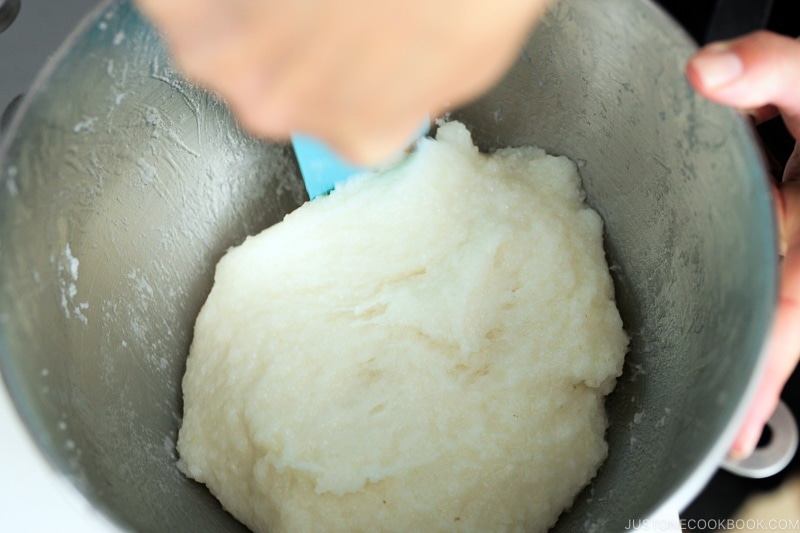
To “Pound“ with a Flat Beater Attachment
- Remove the dough hook attachment from the stand mixer and change to a flat beater attachment.
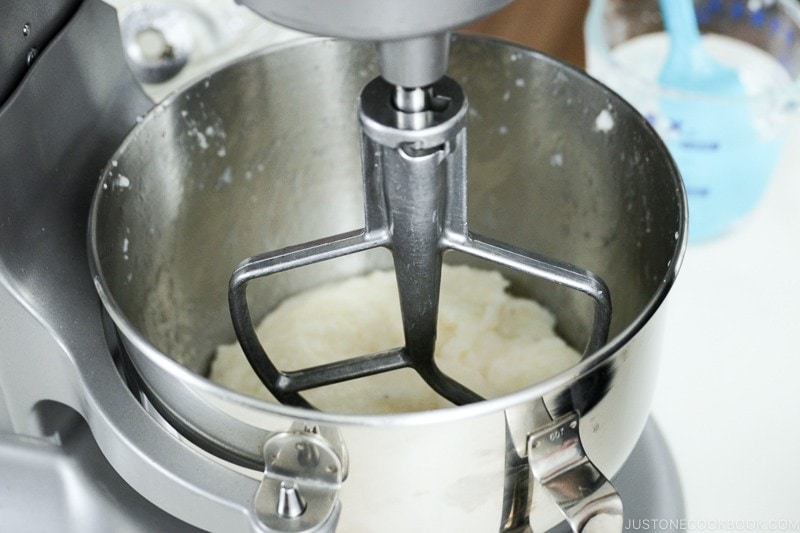
- Beat the mochi on Speed 3. Set the timer for 30 seconds (first round).
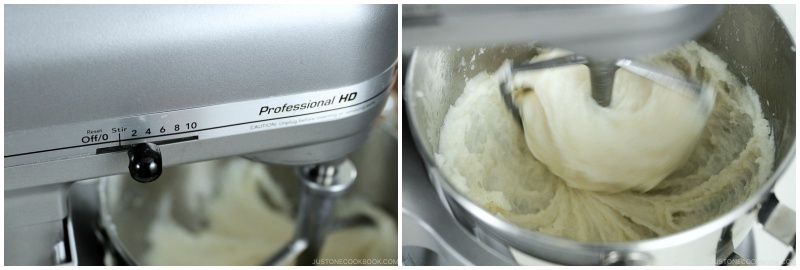
- When the 30-second timer beeps [00:30], do not remove the bowl from the stand mixer. Scrape the mochi as much as you can from the sides of the bowl, using the wet silicone spatula.
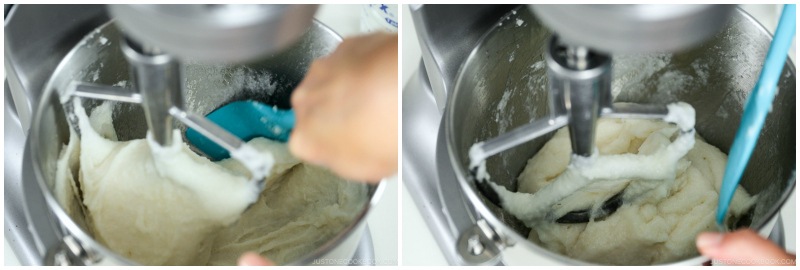
- Reset the timer for 30 seconds (second round). Start beating again on Speed 3. When the 30-second timer beeps [01:00], scrape the mochi again from the sides of the bowl, using the wet silicone spatula.
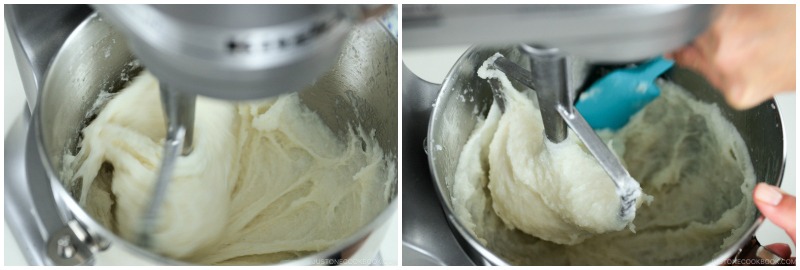
- Reset the timer for 30 seconds (third round). Start beating again on Speed 3. When the 30-second timer beeps [01:30], scrape the mochi again from the sides of the bowl, using the wet silicone spatula.
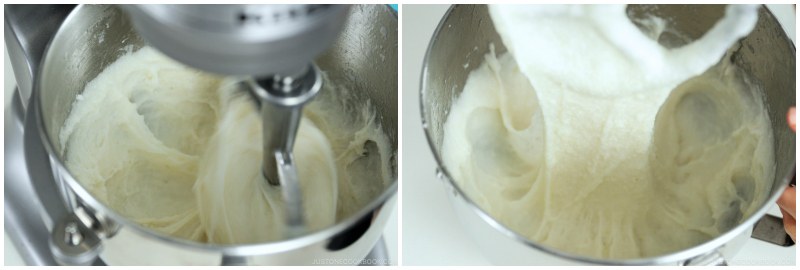
- Reset the timer for 30 seconds (fourth round). Start beating again on Speed 3. When the 30-second timer beeps [02:00], scrape the mochi again from the sides of the bowl, using the wet silicone spatula. Now, the pounding is done.
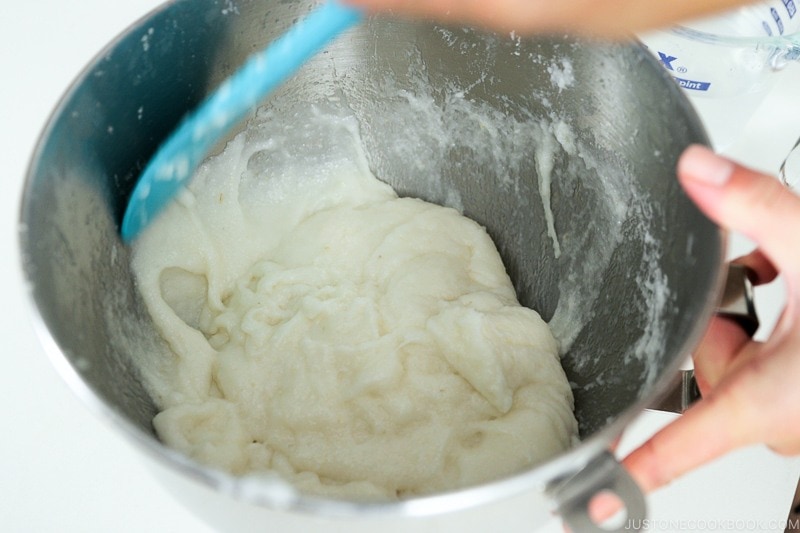
To Shape into Mochi Cakes
- Prepare two rimmed baking sheets by covering them with potato starch or cornstarch. Put all the pounded mochi on one of the baking sheets. The other one is for keeping the mochi cakes.
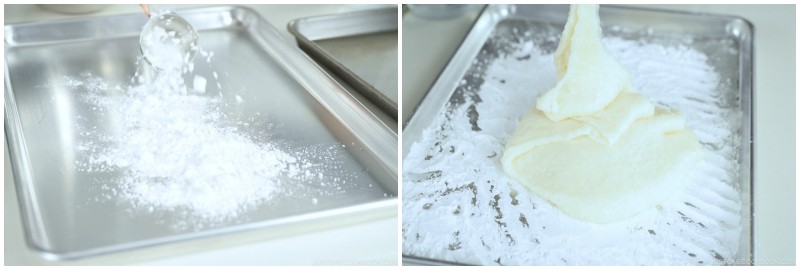
- Sprinkle some potato starch on top of the freshly pounded mochi. Make sure your hands are completely dry and dust them with potato starch. Keep extra starch handy so you can always dust your hands when needed.
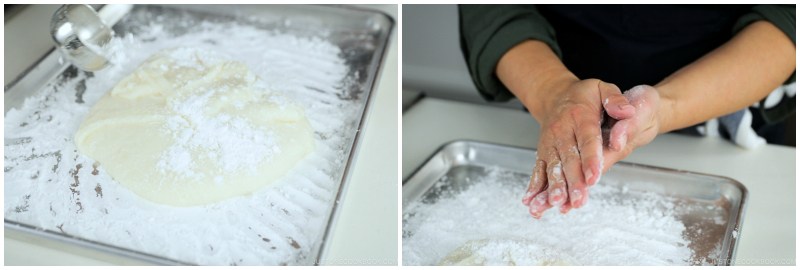
- Spread the potato starch on top of the mochi, making sure there is no sticky part exposed. While the mochi is still hot, but cool enough to handle, pick up a corner of the mochi and start tucking in the edges underneath. Tip: Work quickly while the mochi is still quite warm. As it cools down, it will firm up and harden and be impossible to shape.
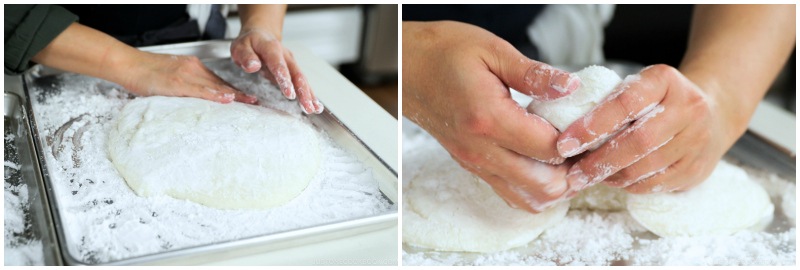
- Once you’ve mounded up a thick layer of mochi, make a C shape with your left index finger and thumb against the edge of the mochi.
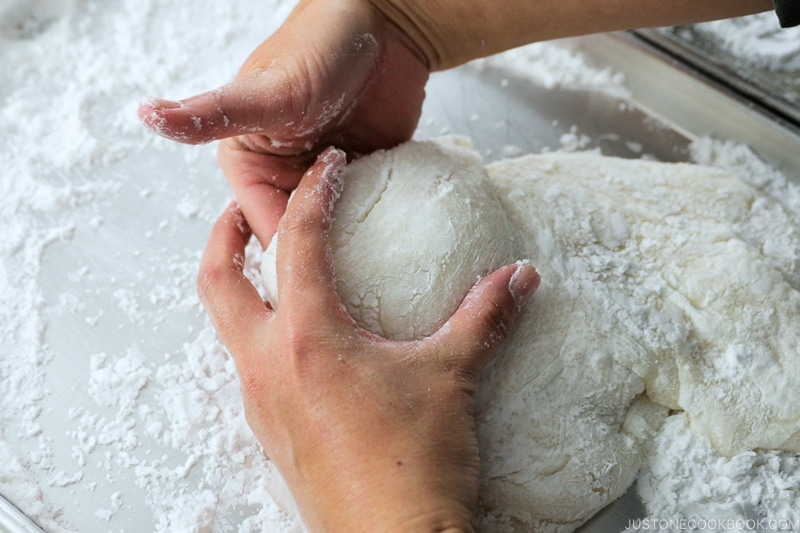
- Use your right hand to tuck in and push up the mochi underneath to create a ball shape above your left C-shaped fingers.
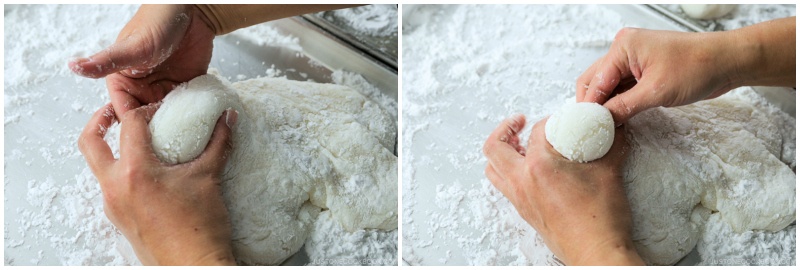
- Pinch and twist: With your C-shaped fingers, pinch underneath the ball to cut off the mochi. Use your right hand to twist it off. Do not pull the mochi, as it creates a sticky surface.
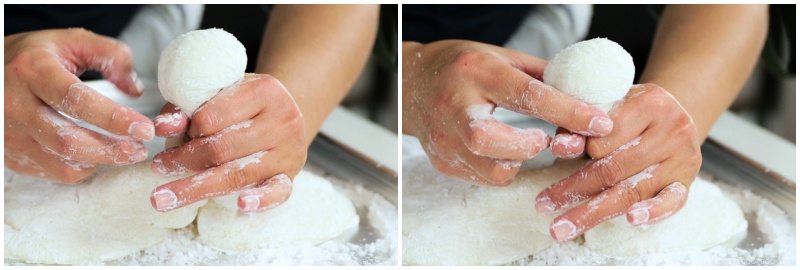
- This photo shows the wrong way to do it. If you pull the mochi like this, it exposes a sticky surface and it will stick to your hands. REMEMBER: Pinch and twist.
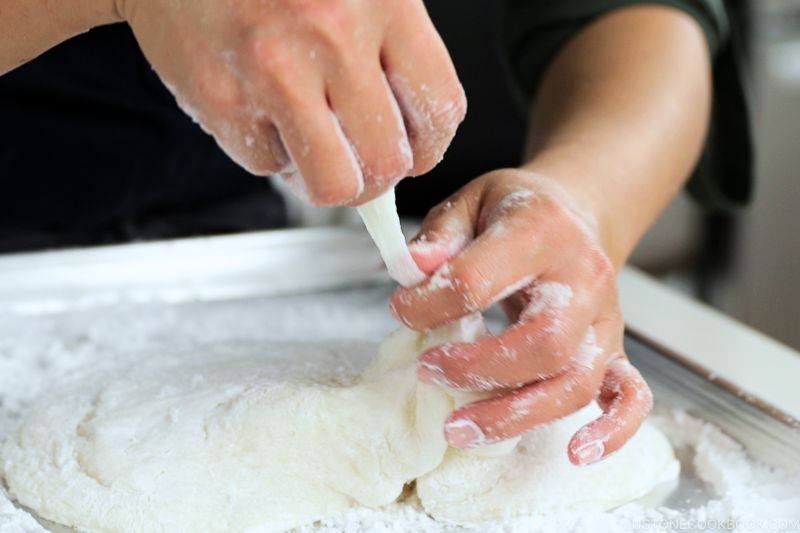
- As you form the mochi cakes, place them on the other rimmed baking sheet. When you‘re ready to eat them, dust off the starch with a pastry brush or with your dry hands. Enjoy your mochi in Japanese New Year Soup (Ozoni) and Red Bean Soup, or make Anko Mochi or Kinako Mochi (see below).
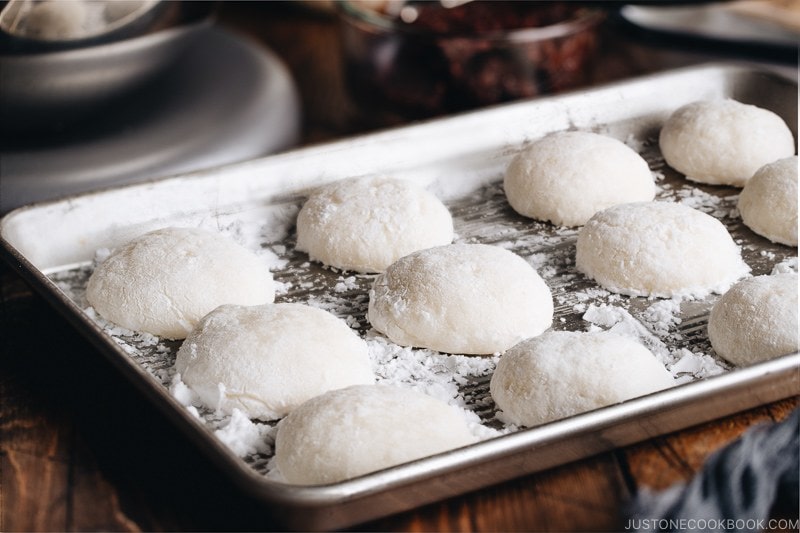
To Store
- If you do not use the mochi cakes immediately, let them cool completely, then cover each one individually in plastic wrap and put in a freezer bag. Store in the freezer for 3 months.

To Make the Anko Mochi (optional)
- Prepare the Anko Mochi while the mochi cakes are still warm. First, flatten the cakes by pressing down with the palm of your hand.
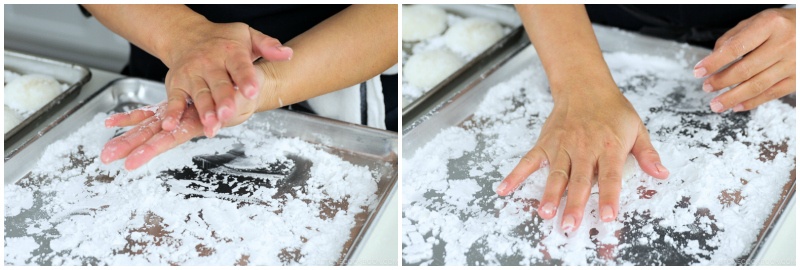
- Brush off the excess starch with a pastry brush or your dry hands. It’s important to remove the starch, so don’t skip this step.
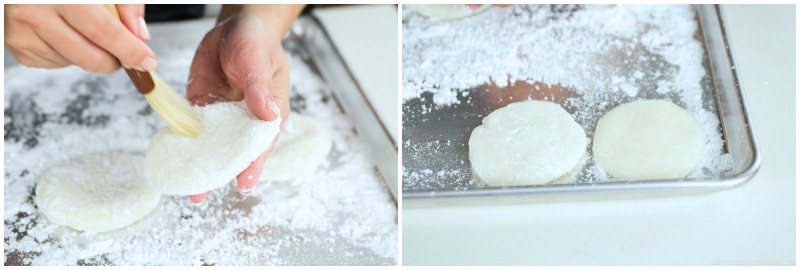
- Put a scoop of sweet red bean paste (anko) in the center of each mochi. Pull two opposite sides of the mochi out and away from the center.
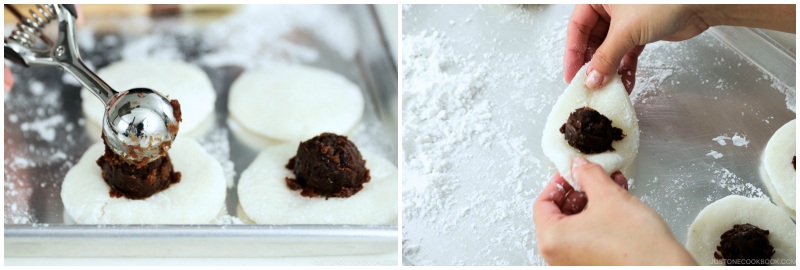
- Pull up the sides and pinch the ends over the anko. Repeat for the other sides and pinch the ends together on top.
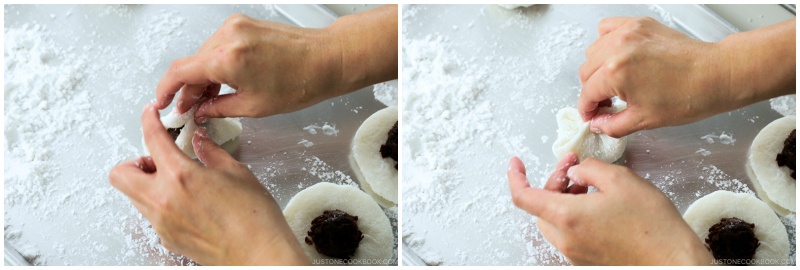
- Lightly dust your hands with potato starch (do not coat too heavily). Use light pressure to pinch and seal the top of the mochi. Repeat with the rest of the mochi pieces. Serve immediately.
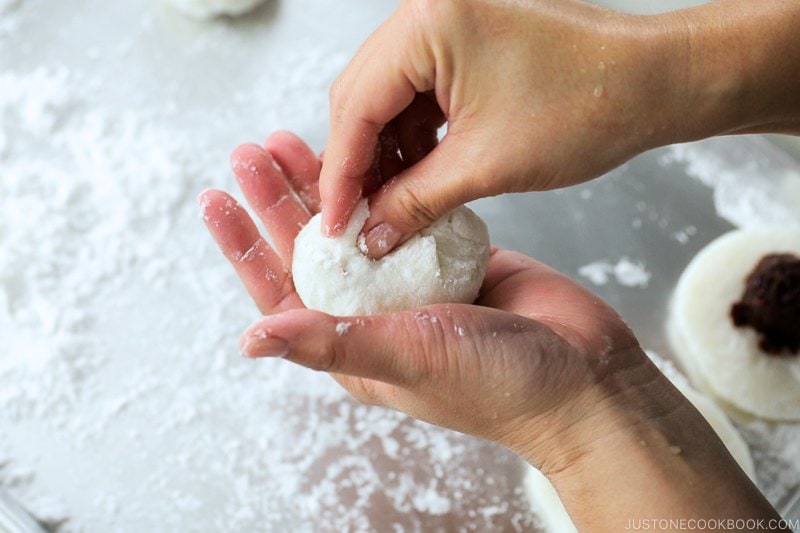
To Make the Kinako Mochi (optional)
- Prepare the Kinako Mochi while the mochi cakes are still warm. In a bowl, combine 2 Tbsp kinako (roasted soybean flour) and 1 Tbsp sugar and mix well. This is enough kinako mixture for 2 mochi cakes.
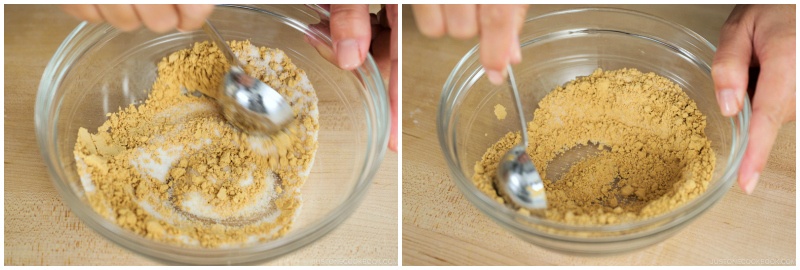
- Pour some hot water in a separate bowl. Use chopsticks to dip a mochi cake in the hot water.
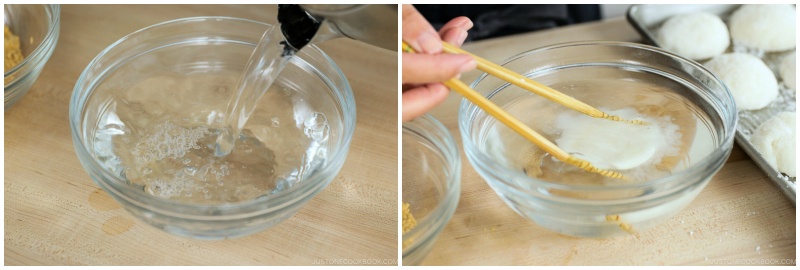
- Then, dip the mochi in the kinako mixture and coat well. Repeat with the rest of the mochi pieces. Serve immediately.
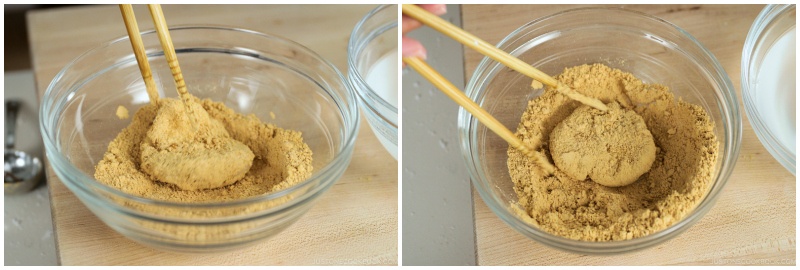
Nutrition
Calories: 104kcal, Carbohydrates: 23g, Protein: 2g, Fat: 1g, Saturated Fat: 1g, Sodium: 2mg, Potassium: 22mg, Fiber: 1g, Calcium: 7mg, Iron: 1mg